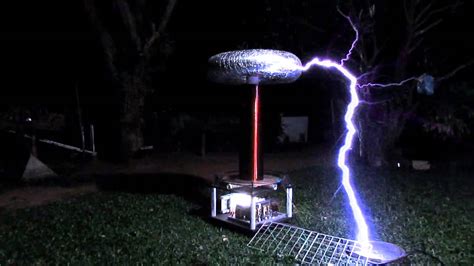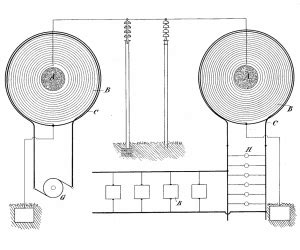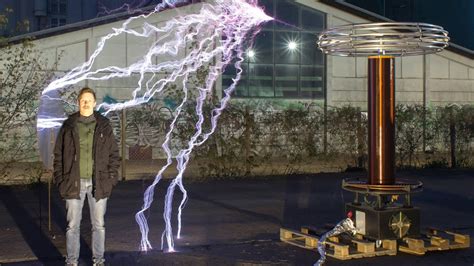The concept of Tesla transformer technology has been a subject of fascination and debate among engineers and researchers for decades. Named after the pioneering work of Nikola Tesla, this technology has the potential to revolutionize the way we think about energy transmission and transformation. At its core, Tesla transformer technology is based on the principles of resonance and electromagnetic induction, which allow for the efficient transfer of energy between two or more coils. In this article, we will delve into the history, principles, and applications of Tesla transformer technology, exploring its potential to transform the way we generate, transmit, and utilize energy.
Key Points
- Tesla transformer technology is based on the principles of resonance and electromagnetic induction.
- The technology has the potential to revolutionize energy transmission and transformation.
- Tesla's work on the Tesla coil and resonant transformers laid the foundation for modern applications.
- Applications of Tesla transformer technology include wireless power transfer, medical equipment, and high-voltage transmission lines.
- Researchers are continuing to explore the potential of Tesla transformer technology for efficient and sustainable energy solutions.
History of Tesla Transformer Technology

Nikola Tesla’s work on the Tesla coil and resonant transformers in the late 19th and early 20th centuries laid the foundation for the development of Tesla transformer technology. Tesla’s experiments with high-voltage, low-current electricity led to the creation of the Tesla coil, a type of resonant transformer that produces high-voltage, low-current electricity. The Tesla coil consists of two coils, a primary coil and a secondary coil, which are connected in a specific configuration to produce a resonant circuit. When an alternating current is applied to the primary coil, it induces an electromotive force (EMF) in the secondary coil, which can produce high-voltage sparks.
Principles of Tesla Transformer Technology
The principles of Tesla transformer technology are based on the concepts of resonance and electromagnetic induction. Resonance occurs when the frequency of the alternating current applied to the primary coil matches the natural frequency of the secondary coil. This resonance causes the secondary coil to oscillate at a high amplitude, producing a high-voltage output. Electromagnetic induction is the process by which a changing magnetic field induces an EMF in a coil. In a Tesla transformer, the changing magnetic field is produced by the alternating current in the primary coil, which induces an EMF in the secondary coil.
| Component | Function |
|---|---|
| Primary Coil | Applies alternating current to the transformer |
| Secondary Coil | Produces high-voltage output through resonance and electromagnetic induction |
| Resonant Circuit | Matches the frequency of the primary coil to the natural frequency of the secondary coil |

Applications of Tesla Transformer Technology

Tesla transformer technology has a wide range of applications, from wireless power transfer to medical equipment and high-voltage transmission lines. One of the most promising applications is in the field of wireless power transfer, where Tesla transformers can be used to transfer energy between devices without the need for cables or wires. This technology has the potential to revolutionize the way we charge our devices, from smartphones to electric vehicles. Other applications include medical equipment, such as MRI machines and particle accelerators, where high-voltage, low-current electricity is required.
Challenges and Limitations
Despite the potential of Tesla transformer technology, there are several challenges and limitations that must be addressed. One of the main challenges is the difficulty of scaling up the technology to handle high powers and high voltages. Additionally, the efficiency of the transformer can be affected by factors such as the quality of the coils, the resonant frequency, and the coupling between the coils. Researchers are working to overcome these challenges by developing new materials and designs that can improve the efficiency and scalability of Tesla transformers.
What is the principle of operation of a Tesla transformer?
+The principle of operation of a Tesla transformer is based on the concepts of resonance and electromagnetic induction. The transformer consists of two coils, a primary coil and a secondary coil, which are connected in a specific configuration to produce a resonant circuit.
What are the applications of Tesla transformer technology?
+Tesla transformer technology has a wide range of applications, from wireless power transfer to medical equipment and high-voltage transmission lines. The technology has the potential to revolutionize the way we generate, transmit, and utilize energy.
What are the challenges and limitations of Tesla transformer technology?
+Despite the potential of Tesla transformer technology, there are several challenges and limitations that must be addressed. These include the difficulty of scaling up the technology to handle high powers and high voltages, as well as the efficiency of the transformer being affected by factors such as the quality of the coils and the resonant frequency.
In conclusion, Tesla transformer technology has the potential to revolutionize the way we think about energy transmission and transformation. The technology is based on the principles of resonance and electromagnetic induction, and has a wide range of applications, from wireless power transfer to medical equipment and high-voltage transmission lines. While there are challenges and limitations to be addressed, researchers are working to overcome these and develop new materials and designs that can improve the efficiency and scalability of Tesla transformers. As the technology continues to evolve, we can expect to see new and innovative applications of Tesla transformer technology in the years to come.
